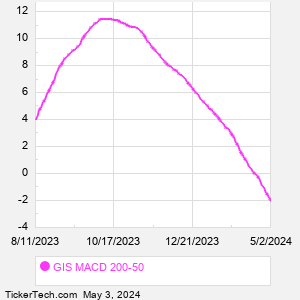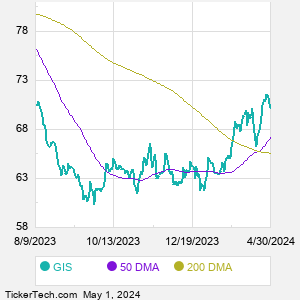General Mills is a manufacturer and marketer of branded consumer foods. Co.'s business is focused on snacks, ready-to-eat cereal, convenient meals, wholesome natural pet food, refrigerated and frozen dough, baking mixes and ingredients, yogurt, and ice cream categories. Co.'s segments include: North America Retail, which reflects business with a variety of grocery stores, mass merchandisers, membership stores, natural food chains, drug, dollar and discount chains, convenience stores, and e-commerce grocery providers; International, which reflects retail and foodservice business outside of the U.S. and Canada; and Pet, which includes pet food products sold primarily in the U.S. and Canada.
When researching a stock like General Mills, many investors are the most familiar with Fundamental Analysis — looking at a company's balance sheet, earnings, revenues, and what's happening in that company's underlying business. Investors who use Fundamental Analysis to identify good stocks to buy or sell can also benefit from GIS Technical Analysis to help find a good entry or exit point. Technical Analysis is blind to the fundamentals and looks only at the trading data for GIS stock — the real life supply and demand for the stock over time — and examines that data in different ways. One of those ways is to calculate a Simpe Moving Average ("SMA") by looking back a certain number of days. One of the most popular "longer look-backs" is the GIS 200 day moving average ("GIS 200 DMA"), while one of the most popular "shorter look-backs" is the GIS 50 day moving average ("GIS 50 DMA"). A chart showing both of these popular moving averages is shown on this page for General Mills. Comparing two moving averages against each other can be a useful visualization tool: by calculating the difference between the GIS 200 DMA and the GIS 50 DMA, we get a moving average convergence divergence indicator ("GIS MACD"). The GIS MACD chart, in conjunction with the chart of the moving averages, basically helps in visualizing how the moving averages are showing convergence (moving closer together), or divergence (moving farther apart). |



